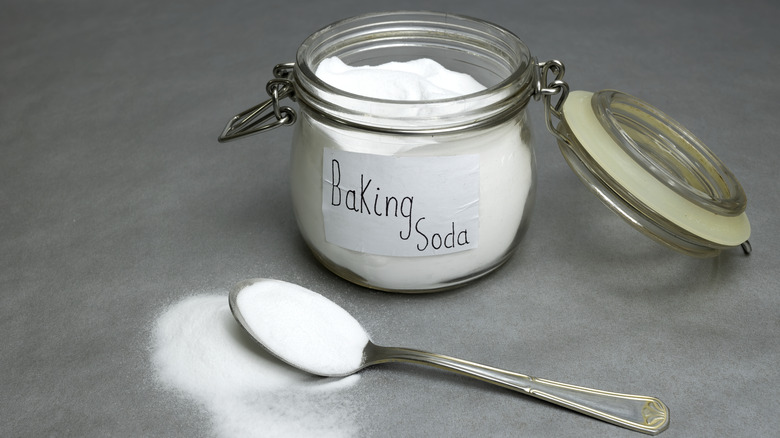Eliminate Dead Mouse Smells With A Budget-Friendly Household Superstar
Discovering a dead mouse in your home can be jarring, to say the least. Beyond the initial shock, there's often an unwelcome guest accompanying the departed rodent: a pungent, lingering odor that seems to permeate into every corner. In fact, sometimes it can actually be the smell that alerts you to seek out its cause and that is when you may stumble upon the deceased rodent. While commercial odor neutralizers and professional exterminators have their place, baking soda can be a budget-friendly ingredient used to eliminate dead mouse smell.
When any animal dies, its cells begin to break down and they release enzymes and bacteria that start the decomposition process. In the case of mice, these processes happen relatively quickly due to their small size. Mice often die in enclosed spaces like walls, under floorboards, or inside furniture. This can confine the odor and make it seem even stronger when you finally do discover it. Another reason why you'll want to locate the body is because it will attract flies, maggots, and other insects.
Why baking soda works
Before you begin to deodorize, it is important to properly and promptly remove the mouse (or mice). Leaving a deceased mouse to decompose not only spreads an unpleasant odor but also poses a health risk due to potential bacteria and pathogens. First, put on gloves and a mask. If the mouse is visible, carefully seal it in a plastic bag and dispose of it properly. If the smell lingers but the source is hidden, look for potential nesting spots in walls, cabinets, or behind appliances. Once the body is gone, thoroughly disinfect the area with bleach or a disinfectant to remove all liquids left behind.
Then grab the baking soda. There are many unexpected ways to use baking soda in your home since it works as a natural odor neutralizer. It both absorbs and neutralizes acidic molecules, which are often the culprits behind unpleasant smells. Its porous nature makes it a magnet for smelly molecules, trapping them within its crystal structure. With deceased animals, the breakdown of tissues releases butyric acid which has a notorious foul smell. Baking soda tackles this acid head-on, trapping and neutralizing its odor. When baking soda comes into contact with unpleasant odors, it triggers a neutralization reaction. In addition, baking soda's odor-fighting powers go beyond just neutralization. It acts like a tiny sponge, trapping odor molecules. So, even if the acid-base reaction doesn't completely neutralize the smell, the baking soda simply holds onto it.
How to use baking soda to get rid of dead mouse smell
Once the body is removed and the spot has been disinfected, mix two parts water and one part baking soda. Then leave a generous amount of baking soda paste directly in the area. Leave the paste for an hour, remove the paste, and then clean the spot with soap and water.
You can also just leave an open container of baking soda out to help absorb the odor or mix baking soda with water in a spray bottle, and spray the solution in the area. Let the baking soda sit for several hours or overnight, allowing it to absorb and neutralize the odor. Once the baking soda has done its work, vacuum thoroughly. Be sure to dispose of the vacuum cleaner bag or canister immediately. If the smell persists, repeat the baking soda application and vacuuming process as needed.
Remember ventilation is key to getting rid of lingering household odors. Open windows and doors whenever possible to allow fresh air to circulate and replace the stale scent. Consider running fans to further promote airflow. While baking soda is a natural and effective odor neutralizer, it's not a magic bullet. If the smell persists or the source of the odor is inaccessible, you may need to call a professional pest company.


